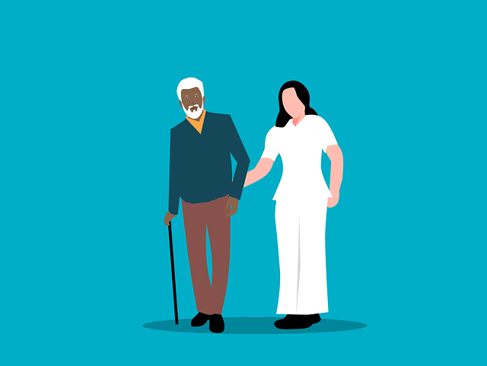December 17, 2022
2023 Guide to Remote Therapeutic Monitoring (RTM) Codes
As a physical therapist, you probably do a lot that you’re not getting reimbursed for. Messaging patients, managing your clinic, and even adjusting schedules.
But in 2022, something big changed. The Center for Medicaid and Medicare (CMS), released five new remote therapeutic monitoring codes (RTM) that make billing for physical therapists, occupational therapists, and speech-language pathologists more accessible.
And while it may seem tricky at first, RTM codes are a great opportunity to improve your patient outcomes, increase clinic revenue, and create impactful recovery programs.
Keep reading to get answers to all of your RTM questions, including:
- What is remote therapeutic monitoring?
- Why should you use RTM codes?
- How to use RTM codes in your practice
- The different codes, definitions, and use cases
- Getting started
 What Is Remote Therapeutic Monitoring?
What Is Remote Therapeutic Monitoring?
Remote therapeutic monitoring (RTM) codes were designed to offer billing when monitoring non-physiologic data related to the musculoskeletal or respiratory system with the use of a medical device. RTM codes cover monitoring patient adherence and response to therapy, including home exercise program (HEP) compliance.
What does this really mean?
You can get paid for communicating with, monitoring, and adjusting care plans for your remote patients, no matter where you (or they) are.
What Is The Difference Between RTM And RPM?
I know what you’re thinking: what’s the difference between RTM and remote patient monitoring (RPM) codes?
While RPM codes are evaluation codes billed by physicians or qualified healthcare providers, RTM codes allow patients to self-report data or automatically upload information collected from medical devices.
They can also be used to describe treatment scenarios for a wider range of providers--including physical therapists, occupational therapists, and speech-language pathologists. Now that we’ve covered what RTM codes are, let’s explore why you should be using them in your clinic.
Four Benefits of RTM
As a PT or OT, remote therapeutic monitoring physical therapy offers many benefits for both patients and clinics. RPM has improved patient outcomes, treatment experiences, and even medication adherence, and RTM should do the same.
Let’s take a deep dive into how you can use the RTM codes to improve your patient outcomes and grow your business.
1. Elevate Patient Outcomes in Less Time
Your prescribed plan of care is always limited by the amount and quality of information that your patients or caretakers offer you. Adherence has long been a struggle for PTs, and remote therapeutic monitoring offers a new way to help patients stick with their home treatment.
RTM codes also cover phone and chat communication between PTs and patients, because you’re keeping patients engaged and invested in their physical therapy.
2. Collect More Accurate Patient Information
With remote monitoring devices and access to therapy via practice management software, your patients can share information in real-time about how they're responding to different situations in more functional or ADL activities outside of the clinic.
This means PTs can bill time spent monitoring and analyzing non-physiological data collected via medical devices to evaluate patient care, communicate with patients, and adjust plans. You can even provide better virtual care with access to client data they wouldn’t normally have for a patient who’s not at the clinic.
3. Accessibility and Enhanced At-Home Care
As a PT, it’s so important to support patients that struggle to leave their homes due to mobility issues, lack of transportation, or other health concerns. RTM gives you a new way to provide care remotely and promote their well-being regardless of if they can physically visit your clinic.
RTM also provides flexibility over where you or your team are supporting remote patients, opening up your availability even when you’re not in the office.
4. Grow Your Clinic’s Revenue
While patient engagement alone can improve outcomes and lower healthcare costs, RTM codes also allow PTs to increase profits by engaging with patients outside of the office and earning compensation for their time.
RTM gives you compensation for much of the work PTs have done without reimbursement--collecting data, training patients on remote monitoring devices, monitoring outcomes, and engaging patients. In fact, PT practices that use RTM code billing can generate over $25,000 in annual profit per provider.
How to Use RTM Codes

Updated in 2022, there’s flexibility around billing RTM codes. However, providers that do use and bill for these codes need to adhere to each compliance and billing standard. It’s not designed to be tricky, but learning when and how to use remote therapeutic monitoring physical therapy codes takes practice.
As you use RTM CPT codes, make sure you submit documentation that supports your clinical decisions to offer these resources to the patient. Your practice management software should support RTM billing codes with:
- 24/7 web and mobile app access to patient portals
- Custom Home Exercise Programs (HEP) with exercise compliance tracking
- Health trackers with custom daily subjective monitoring
- Activity logs to measure patient goals and progress
- HIPAA-Compliant two-way messaging capabilities
Psst—not to toot our own horn, but PtEverywhere does all of that (and more)! To see how our practice management software makes using RTM billing codes easy, request a demo.
2022 RTM Codes, Descriptions, and Billing Frequency
January 1, 2022, CMS approved five new Remote Therapeutic Monitoring CPT codes for RTM: 98971, 98976, 98977, 98980, and 98981.
|
RTM CPT Code: |
Type: |
Description: |
Frequency: |
|
98975 |
Service |
Initial set-up and patient education on the use of RMT equipment |
Once per episode of care |
|
98976 |
Service |
Devices supply with scheduled recordings and/or alerts to monitor respiratory systems |
Once every 30 days |
|
98977 |
Service |
Devices supply with scheduled recordings and/or alerts to monitor musculoskeletal systems |
Once every 30 days |
|
98980 |
Treatment management |
Interactive communication with the patient for first 20 minutes |
Once per calendar month |
|
98981 |
Treatment management |
Each additional 20 minutes of interactive communication with the patient |
Multiple times per calendar month |
Here are some examples of what these might look like in practice:
- Code 98977: The patient can use the PtEverywhere app on their phone or computer to track their exercises
- Code 98980: Physical therapists can monitor patient log-in history to understand if the patient has been compliant with their HEP and review this data with your patients
Types of RTM devices
CMS hasn’t listed example devices that PTs and OCs can use to bill RTM codes. Rather, they’ve stated that the device must be defined as a medical device by the FDA guidelines in section 201(h) of the Federal Food, Drive, and Cosmetic Act (FFDCA).
This states that medical devices should be:
- recognized in the official National Formulary, or the United States Pharmacopoeia, or any supplement to them
- Intended to diagnose or help cure, mitigate, treat, or prevent diseases or other conditions
- Intended to affect the body without (or nearly without) chemical action
- Unreliant on metabolization
These medical devices might include:
- Therapy (medication) adherence
- Therapy (medication) response
- Remote weight monitors
- Spirometers
- Blood pressure monitors
- Glucose monitors
- Pulse oximeters
Getting Started With RTM at Your Practice
.jpg?width=382&height=255&name=face-recognition-personal-identification-collage-min%20(1).jpg)
Whether you’re looking to improve patient outcomes or uncover new revenue for your physical therapy clinic, remote therapeutic monitoring may be the solution.
With an all-in-one physical therapy practice management software like PtEverywhere, you can make RTM code billing fast and efficient to streamline client communications, improve patient outcomes, and drive clinic revenue–all from one mobile cross-platform solution.
To learn more about RTM billing at your clinic, book a demo.


